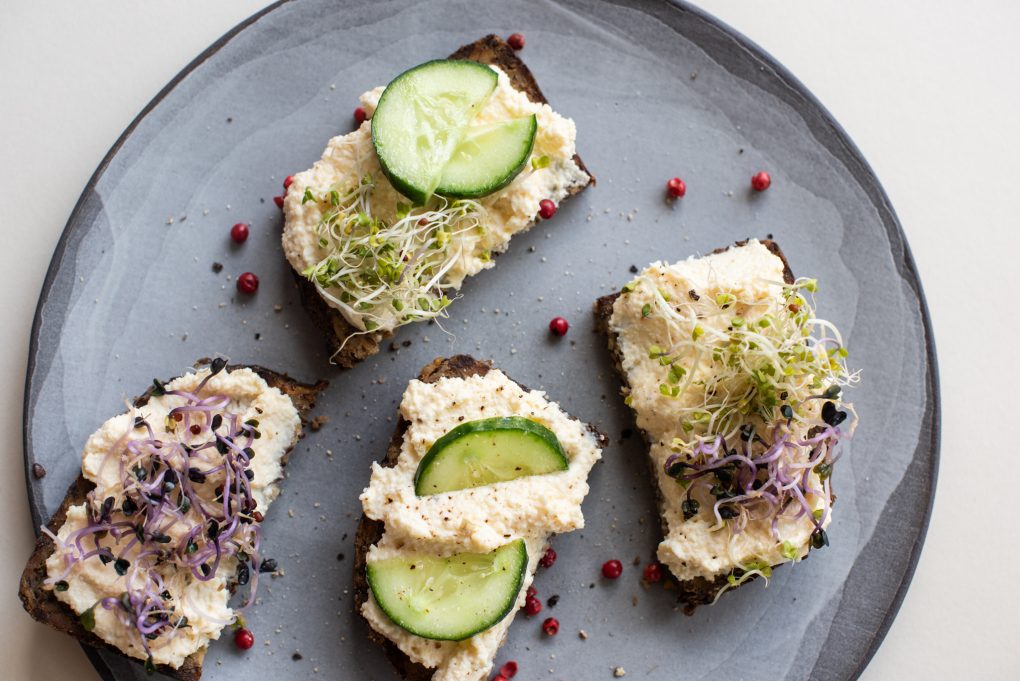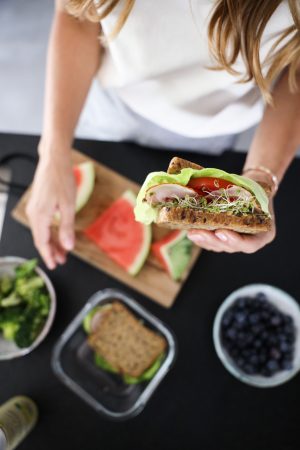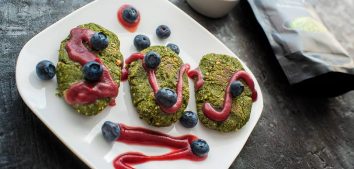
Eat Sprouts for Health!
Winter is here for good. The frosty, white Christmas and a slightly less wintery New Year’s Eve are gone, and thus the time of summaries and New Year’s resolutions has come. Many of you have included healthy eating on your lists. Today I am going to tell you about a product that should be part of every healthy diet. Below you will find some interesting facts about sprouts.
What are sprouts and where do we find them?
Sprouts are seed-derived young plants in the early stages of growth. We call their production process sprouting. During the process of sprouting, many easily digestible nutrients are released from the seeds. This is why sprouts are so nutritious, and their digestion and absorption is much easier for our body than the seeds themselves. The sprouts accumulate nutrients that could be used by the adult plant in the future. As you can see, a small dose of sprouts is enough to provide the body with a lot of valuable ingredients.
The wealth of nutrients in sprouts!
You already know that sprouts are healthy, but what do they actually contain? I will list a few of the most popular types for you and describe their advantages.
Mung bean sprouts – they are crunchy and slightly sweet in taste. A word of advice for parents: mung bean sprouts are a great snack for your little ones. If your kids are not fans of the green color on the plate, it is worth starting the sprout adventure with them. These sprouts are rich in potassium, calcium, magnesium, vitamin C, antioxidants, and fiber. They can be eaten raw or after a short heat treatment.
Alfalfa sprouts – are considered to be one of the healthiest. They owe their fame to a large amount of vitamin K, folic acid, potassium, magnesium, and vitamin A. Alfalfa sprouts are also rich in antioxidants and phytoestrogens: ingredients which support the female endocrine system. You should eat these sprouts raw, add them to salads, or as a topping.
Broccoli sprouts – extremely popular thanks to the content of sulforaphane, an ingredient with proven anti-cancer properties. The concentration of sulforaphane in sprouts is much higher than in the adult plant. In addition, broccoli sprouts are a source of antioxidants, fiber, vitamin C, A, calcium and iron. They have a beneficial effect on the cardiovascular system. They have a positive effect in the treatment of Helicobacter Pylori infection, and numerous studies carried out in 2014 and in subsequent years have shown that supplementation with sulforaphane contributes to the relief of symptoms of some types of autism. It is worth remembering that the concentration of sulforaphane in sprouts decreases with their storage time, which is why fresh sprouts are the most valuable. High temperature is also unfavorable and causes significant losses. You should only eat broccoli sprouts raw!
Radish sprouts – these are slightly spicy and more and more popular sprouts. They are a valuable source of magnesium, vitamin C, niacin and sulphur. They are recommended as an ingredient supporting detoxification due to their heavy metal chelating properties. These sprouts are best eaten raw. They are not recommended for people with histamine intolerance.
Kale sprouts – these provide you with vitamins B1, B2, B6, folic acid, vitamin C, carotenoids, magnesium, zinc, iron, calcium, and the previously mentioned sulforaphane. Like broccoli sprouts, they do not tolerate high temperatures and long storage.

Where can you find sprouts and how should you store them?
Ready-to-eat sprouts are now available in most supermarkets, grocery stores, and health food stores. You’ll find them in refrigerators, usually near fresh herbs, lettuce, and green leaves.
Importantly, the sprouts should be properly stored, so when shopping, pay attention to whether they are refrigerated, check the use-by date, smell and appearance.
Sprouting is a process that takes place at high humidity and at room temperature, which, unfortunately, can promote the growth of various types of bacteria, including Escherichia Coli and Listeria Monocytogenes. Proper storage of ready-made sprouts, i.e. at low temperature in the fridge, and rinsing the sprouts before consumption, reduces the risk of infection to a minimum.
How to grow your own sprouts?
The seeds are the basis for growing sprouts. These should be special seeds intended for sprouts, pre-decontaminated and not affected by plant protection products. It is best to choose seeds for sprouts from organic farming where the use of chemicals is prohibited.
Depending on the type of sprouts, there are several methods of growing them:
- the jar method- seeds are placed in a jar and regularly moistened until sprouts are obtained. A gauze is placed on the jar and during the time between the rinsing of the seeds, the jar is placed upside down at an angle of approx. 45 ° so that excess water can drain into the vessel placed underneath.
- sprouting on a layer of fabric moistened with water – seeds are placed on a piece of fabric, e.g. a cotton cloth, lignin, or into a linen or hemp bag that absorbs water and holds it. The seeds are regularly moistened as in the previous method until sprouts are obtained. The bag is suspended and the piece of fabric is placed on the drain sieve between rinses.
- sprouting in a sprinkler – the sprouting device is a set of trays with a perforated or notched bottom, with a hole for draining excess water. Seeds are scattered on the trays. The sprouting trays are stacked on top of each other and the seeds are rinsed regularly. In this way, it is possible to grow several types of sprouts at the same time.
It is essential to adequately and frequently rinse the seeds 2-4 times a day with lukewarm, boiled water in each of these methods. The seeds should have access to oxygen and, in some varieties, also to light. Sprouts should grow at room temperature.
Sprouts are an invaluable source of nutrients for you. As we can enjoy them regardless of the season, especially now, in the winter, when we lack fresh vegetables and fruit, it is worth adding sprouts to our daily menu. They will supplement your diet with vitamins, minerals, antioxidants and fiber. In my application you will find sprouts in many recipes. They appear as an ingredient of salads, spreads, toppings for main courses and snacks. If you don’t have time to grow your own sprouts, no excuses, you can find them in most stores. However, remember about proper storage and pay attention to their freshness and quality. Eat sprouts and enjoy their benefits!
Bibliography:
- McGuinness G, Yeonsoo K. Sulforaphane treatment for autism spectrum disorder: A systematic review.EXCLI J. 2020;19: 892–903.
- Memorial Sloan Kettering Cancer Center https://www.mskcc.org/cancer-care/integrative-medicine/herbs/broccoli-sprouts
- Okomo Aloo S, Kwame Ofosu F, Kilonzi S, Shabbir U, Hwan Oh D. Edible Plant Sprouts: Health Benefits, Trends, and Opportunities for Novel Exploration. Nutrients. 2021;13(8): 2882.
- Singh K, Connors SL, Macklin EA, Smith KD, Fahey JW, Talalay P, Zimmerman AW. Sulforaphane treatment of autism spectrum disorder (ASD). Proc Natl Acad Sci U S A. 2014. 28; 111(43):15550-5.
- Szulc J, Czaczyk K, Gozdecka G. Metody otrzymywania kiełków – od upraw domowych do produkcji przemysłowej. Żywność; Nauka. Technologia. Jakość, 2017; 24,3(112):27 – 40.









Comments No Comments
Join the discussion…